Japanese traditional tattoo are one of the oldest tattooing styles that we know of; the look of which remains iconic to this day. Japanese traditional tattoos, known as Irezumi the term translates to ‘inserting ink’, have been an integral part of Japan’s rich cultural heritage for centuries.
These tattoos are more than just body art; they carry deep symbolism, reflect historical traditions, and tell stories of strength, honor, and spirituality. In this article, we will dive into the ancient art of Japanese tattoos, exploring their history, cultural significance, and the powerful meanings behind some of the most popular designs.
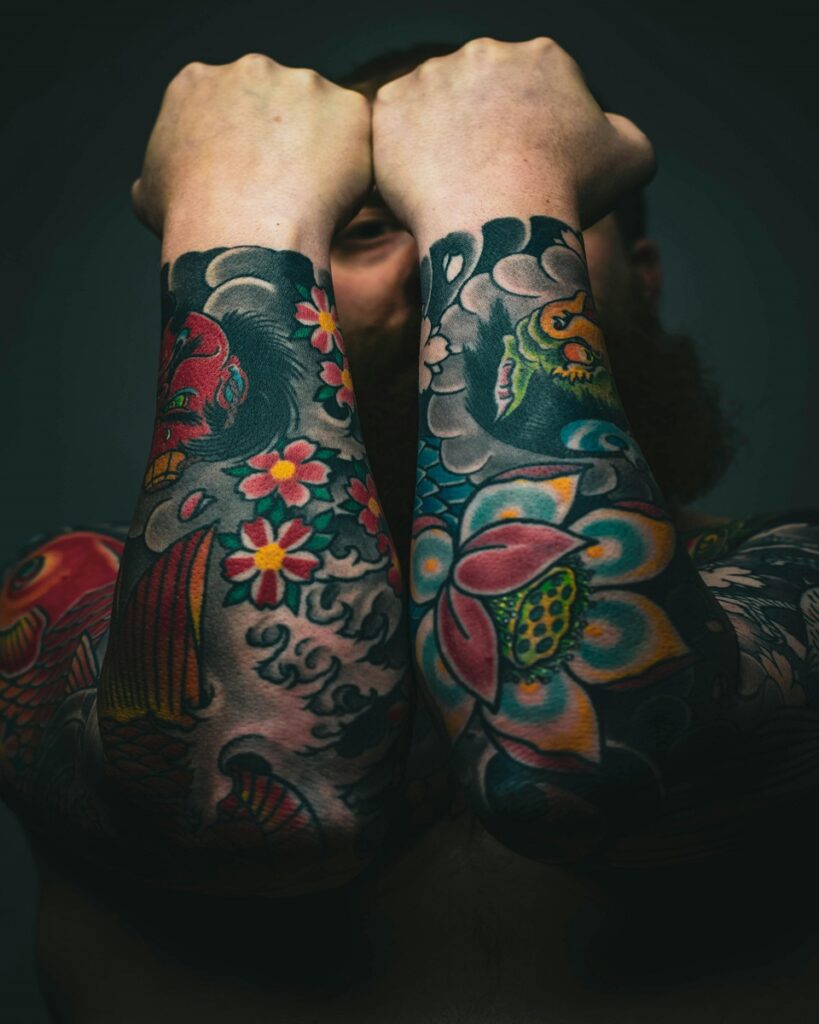
Table of Contents
History of Japanese Tattoos (Irezumi)
The story of Japanese tattoos is a fascinating journey that stretches back to ancient times. Originally, they were used as markers for identification or as a form of punishment. But everything changed during the Edo period (1603–1868), when tattoos transformed into an exquisite art form, particularly among certain social groups.
This shift was deeply influenced by the Yakuza, Japan’s infamous mafia, who embraced tattoos as powerful symbols of loyalty, courage, and the ability to endure pain—qualities that became synonymous with strength and resilience.
Although tattoos were often linked to criminality, they gradually found admiration among artisans, warriors, and even the elite. It was during this era that Japanese tattooing developed its signature style, celebrated for its bold outlines, vibrant colors, and intricate storytelling designs. Known as irezumi, these tattoos became a proud expression of individuality, culture, and personal identity.
Today, Japanese tattoos remain a revered art form, valued not just in Japan but around the world. They are admired for their rich history, cultural depth, and undeniable artistic beauty, making them timeless symbols of self-expression and heritage.
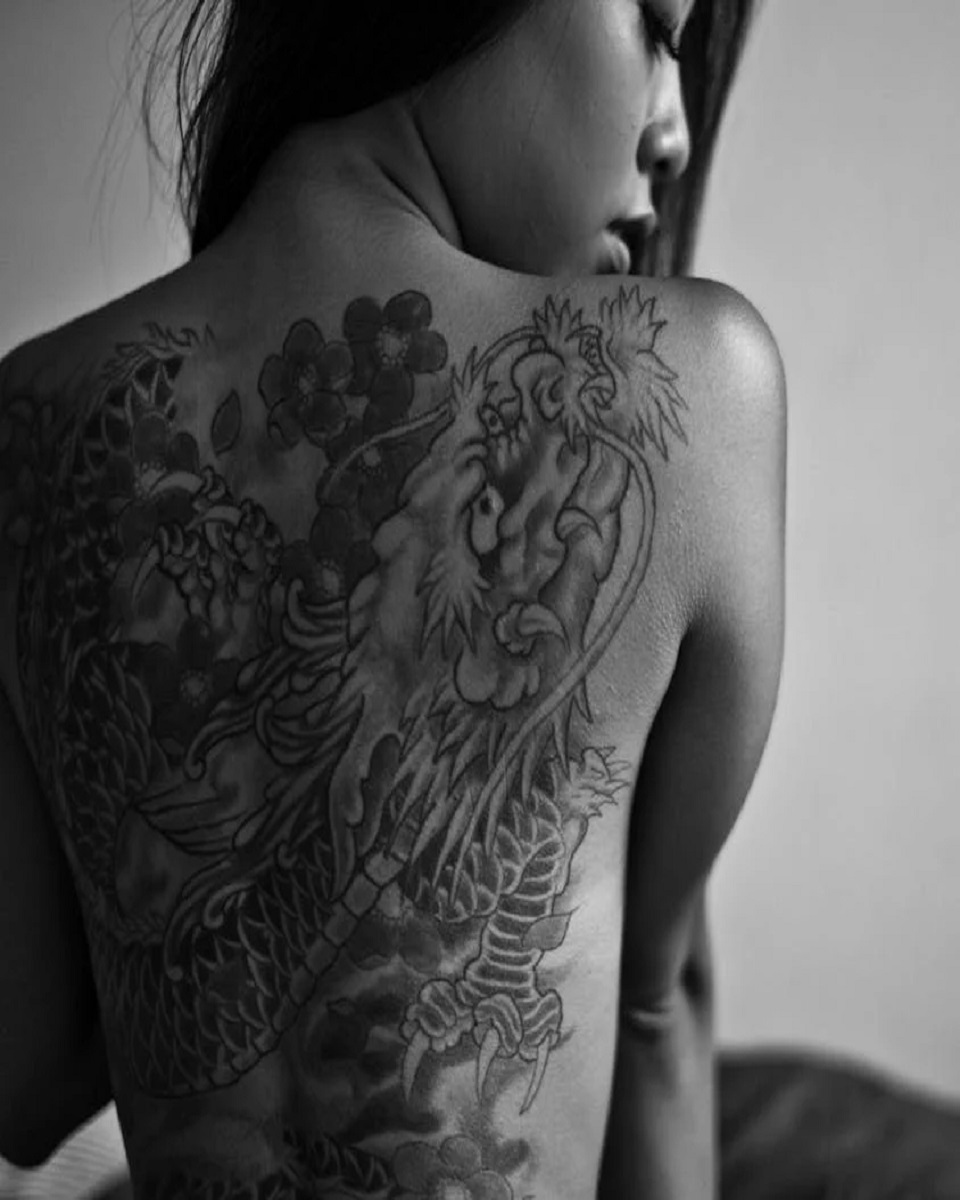
Japanese meaning of Symbols and Colors for a Tattoo
One of the most distinctive features of Japanese tattoos is the use of symbols, characters, and colors, each carrying a profound meaning. The use of symbols such as dragons, tigers, koi fish, and cherry blossoms represents various aspects of life, nature, and spirituality.
Symbols in Japanese Tattoos
Dragon:
In Japanese tattoos, the dragon is an iconic symbol of strength, wisdom, and protection. Unlike their Western counterparts, Japanese dragons are seen as benevolent creatures that guide and protect people, helping them overcome evil. The dragon’s color carries additional meaning—green symbolizes a connection to nature, while gold represents virtue.
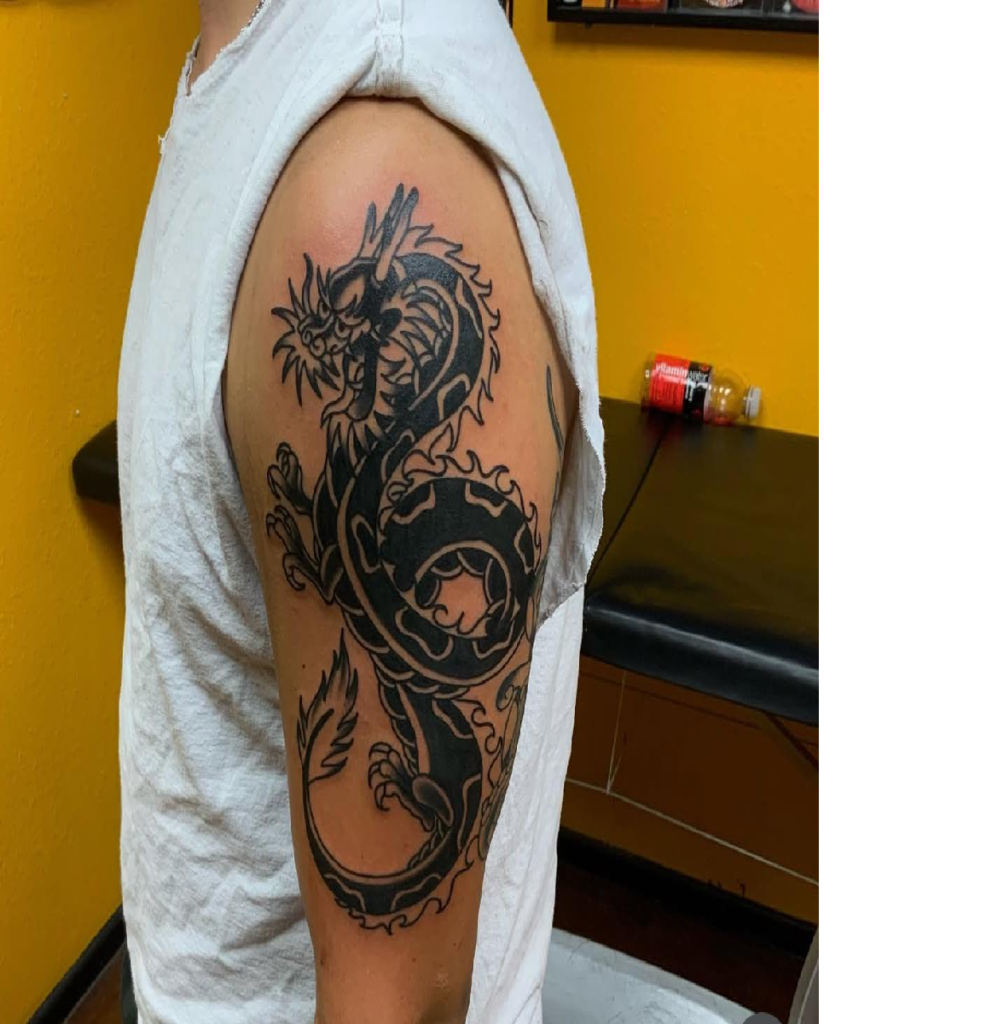
Tiger:
The tiger is a powerful figure in Japanese culture, representing courage, strength, and good fortune. It’s also believed to drive away evil spirits and disease, bringing harmony and balance to those it protects.

Koi Fish:
Koi fish are among the most recognizable symbols in Japanese tattoos, standing for bravery, perseverance, and success. The colors of the koi add deeper meaning—red, for instance, is said to bring love to the wearer.
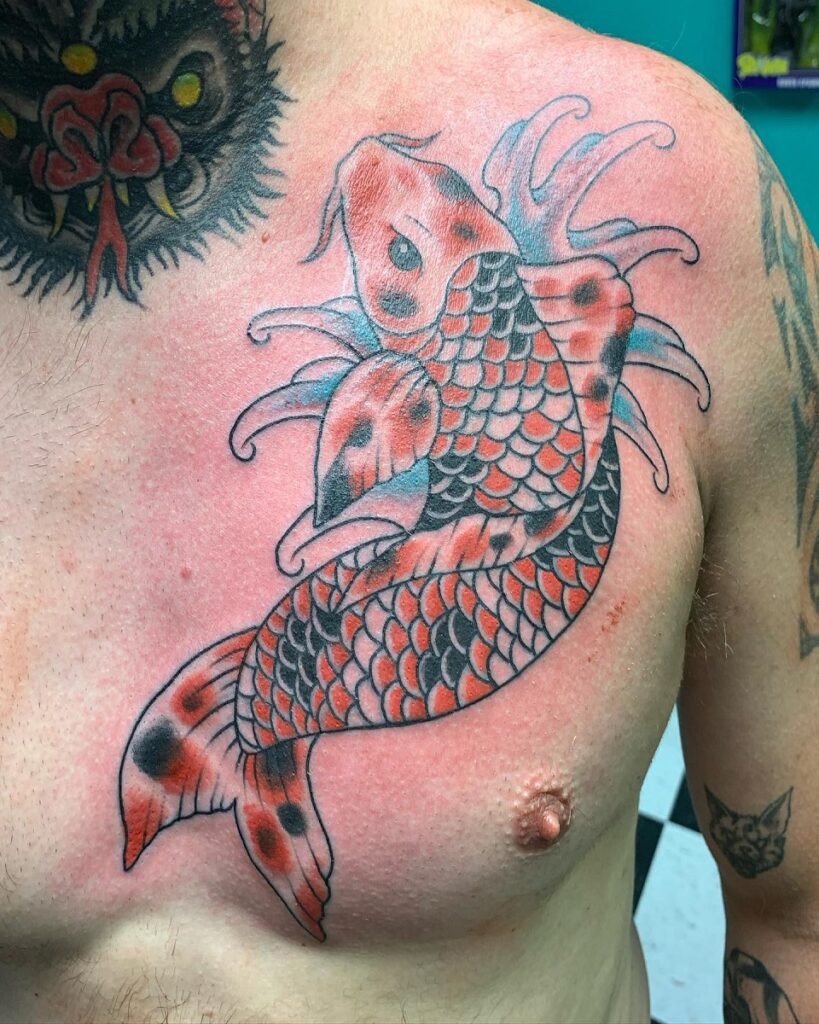
Cherry Blossom:
Cherry blossoms are a delicate yet meaningful design in Japanese tattoo art. They symbolize the fleeting beauty of life, its fragility, and its inevitable end. Their vibrant, colorful designs make them a popular choice, especially among younger generations.
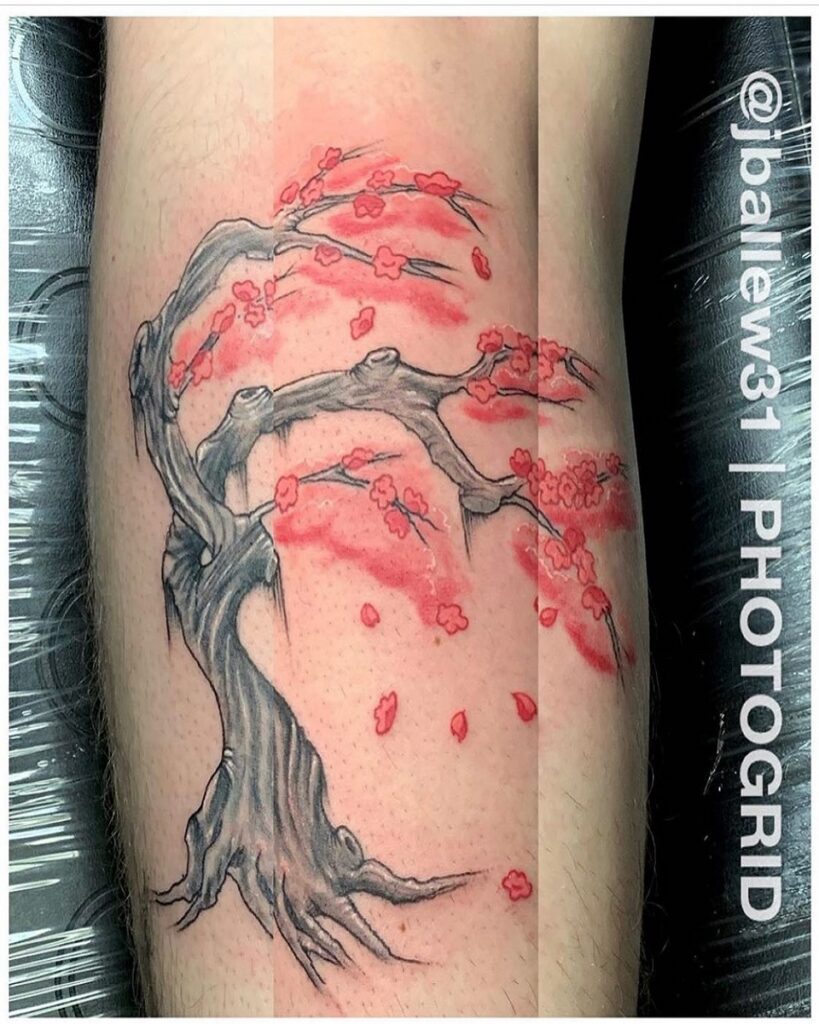
Skull:
In Japanese tattoos, skulls represent the cycle of life and death, similar to cherry blossoms. However, they often serve as a way to honor and remember loved ones who have passed away.
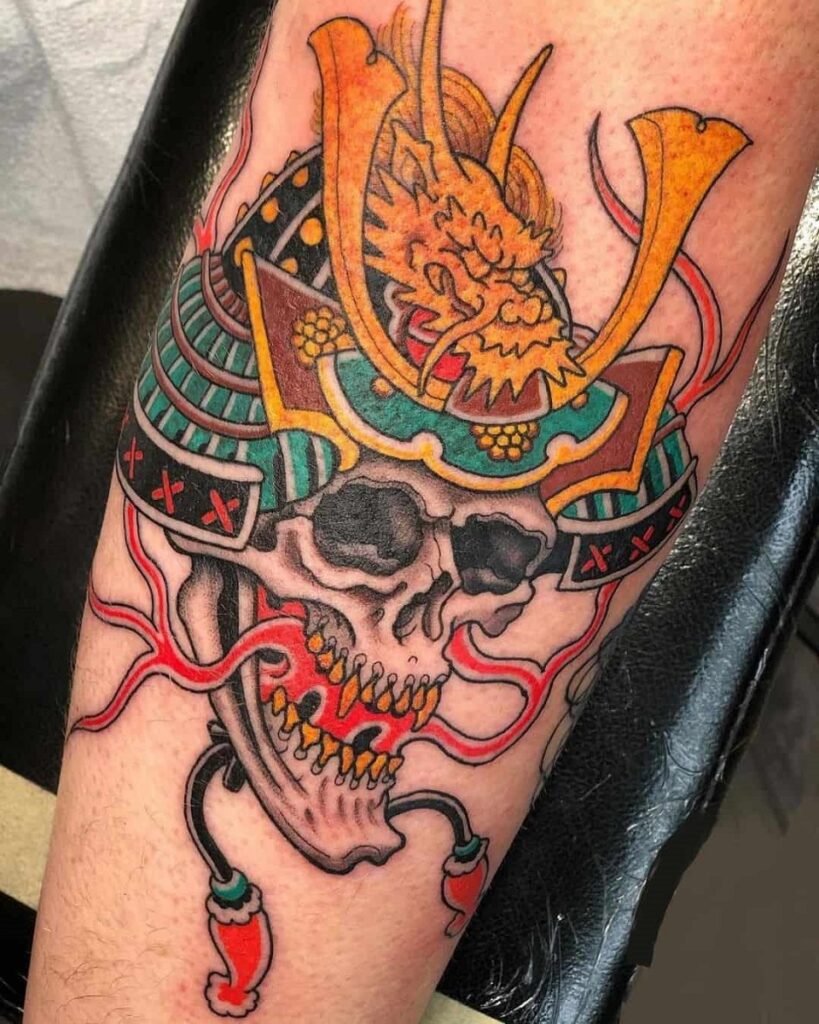
Hannya Mask:
The Hannya mask portrays a woman driven to madness by jealousy, transforming her into a vengeful demon. This striking symbol has roots in traditional Noh theater and Shinto rituals, carrying a haunting yet culturally significant backstory.
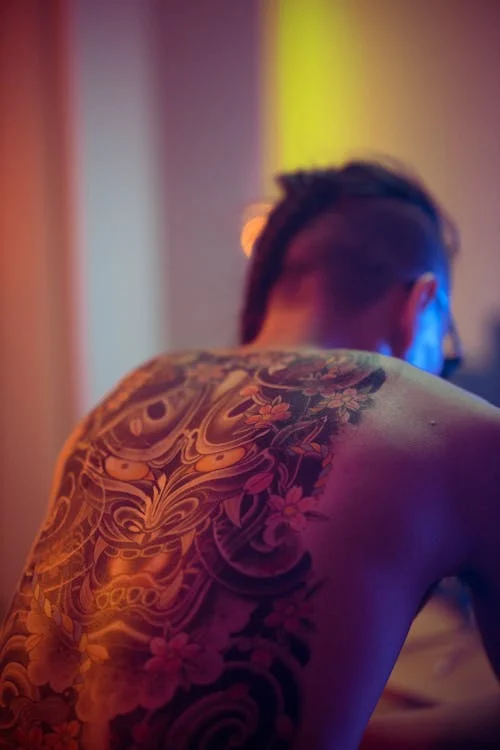
Phoenix:
The phoenix, drawn from Chinese mythology, is a symbol of rebirth, renewal, and triumph over adversity. It represents rising from challenges and embracing personal transformation and growth.
As for colors, Japanese tattoos often incorporate a specific color palette that enhances the symbolism. Each color adds a layer of depth to the tattoo’s meaning, making the choice of color just as important as the design itself.
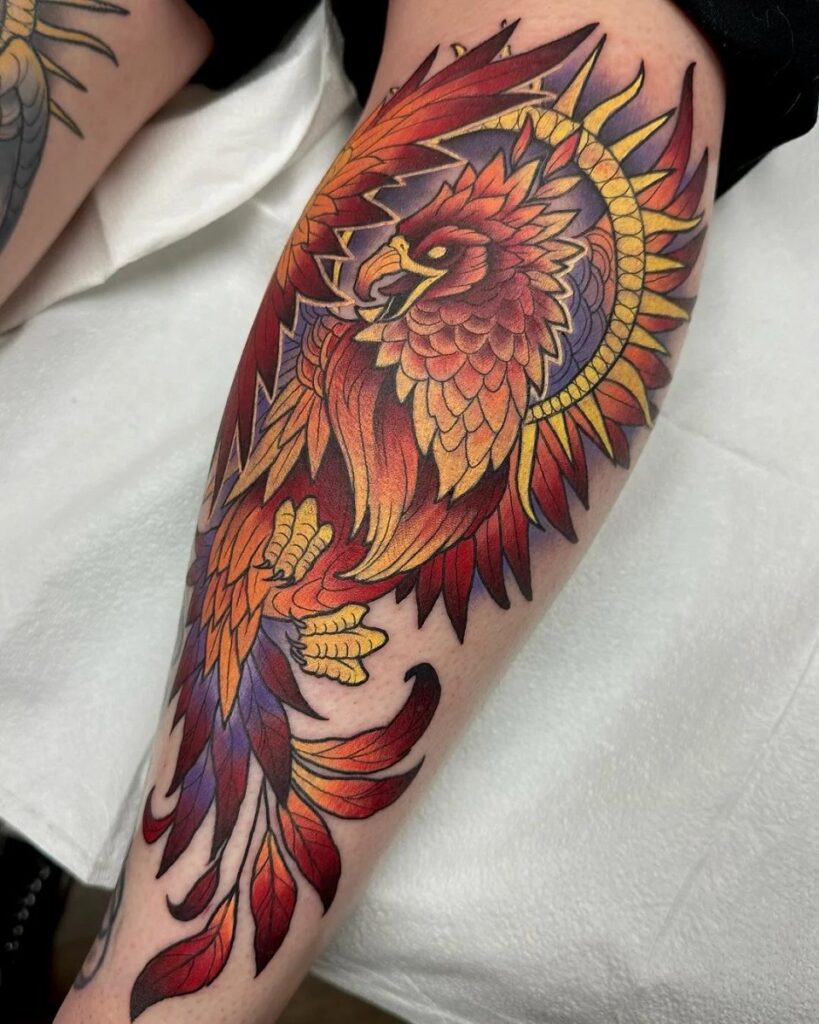
Colors in Japanese Tattoos
White:
White symbolizes innocence and purity, like a fresh start in life. It represents honesty and uncorrupted simplicity.
Red:
Red is deeply significant in Japanese culture. As the color of blood, it symbolizes life itself and is believed to offer protection. It also represents happiness, passion, joy, and longevity.
Blue:
Blue is associated with good fortune and financial success. It is also tied to fidelity and luck for those who wear it.
Green:
Green, the color of nature, symbolizes energy, youth, and the vitality of life.
Purple:
Traditionally linked to royalty due to its rarity, purple still represents elegance and sophistication.
Pink:
Pink, seen as a feminine color, symbolizes the and fragile nature of life.
Yellow:
Yellow can have dual meanings: in some regions, it symbolizes joy and optimism, while in others, it is linked to deceit.
Popular Japanese Tattoos: Warriors, Tigers, Waves, and Samurai
Japanese tattoos are renowned for their bold, intricate designs and the meaningful symbols they incorporate, such as warriors, tigers, waves, and samurai. These striking images aren’t just visually captivating—they carry deep cultural and personal significance.
Warrior Tattoos:
Warrior tattoos symbolize strength, courage, and honor. Depicted in detailed armor, they embody resilience and the warrior’s code of protecting family and country. These designs stand for loyalty, duty, and an unwavering spirit.
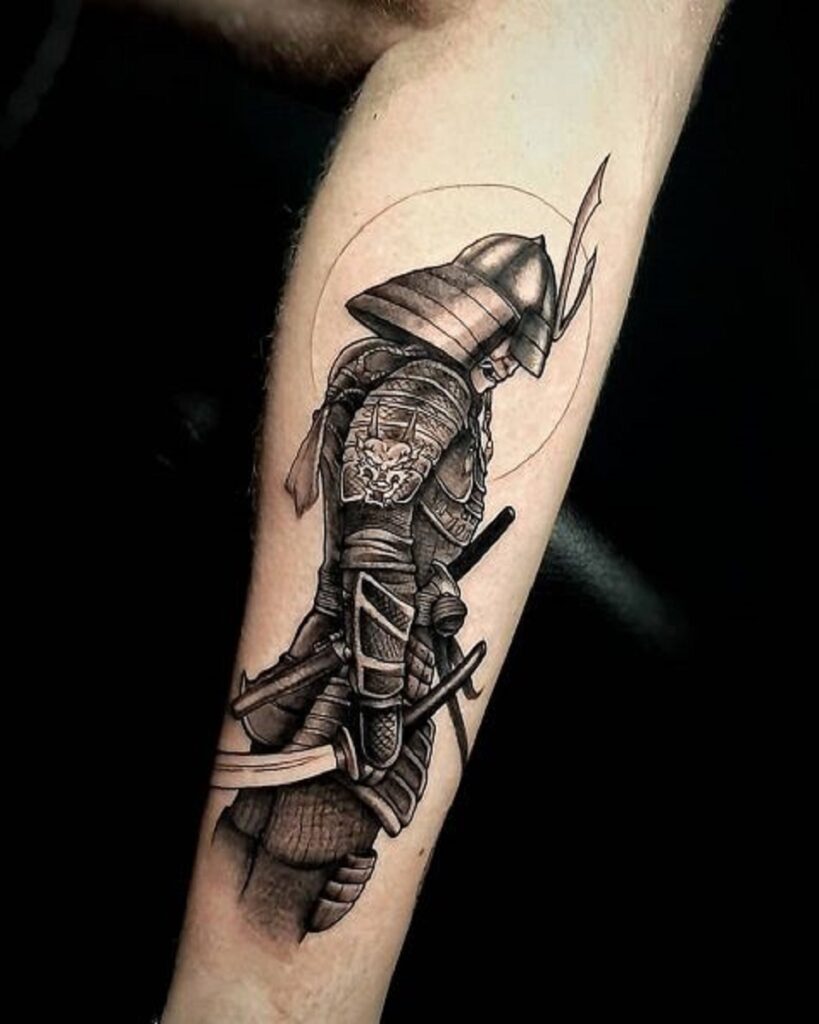
Tiger Tattoos:
Tigers hold a special place in Japanese tattoo culture, representing power, courage, and protection. Known for their fierce and unstoppable nature, they symbolize strength in overcoming life’s challenges.
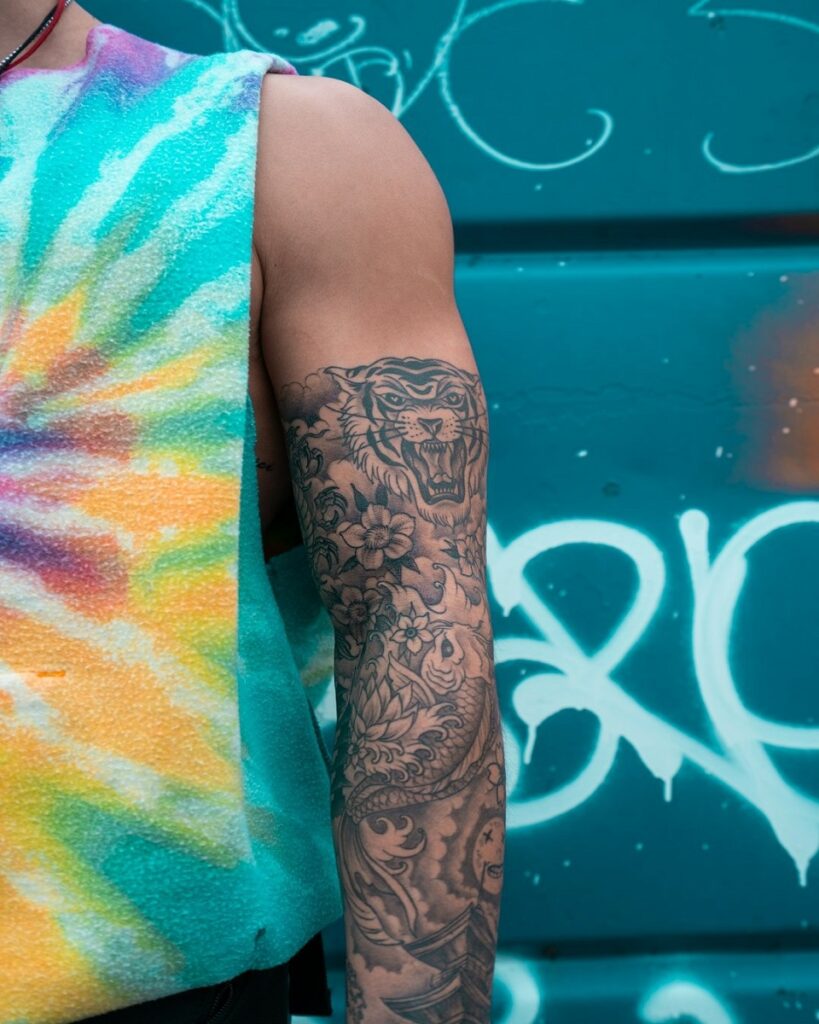
Wave Tattoos:
Inspired by iconic art like The Great Wave off Kanagawa, wave tattoos capture the raw power and unpredictability of nature. They symbolize the ebb and flow of life, reflecting the emotional highs and lows we all face.
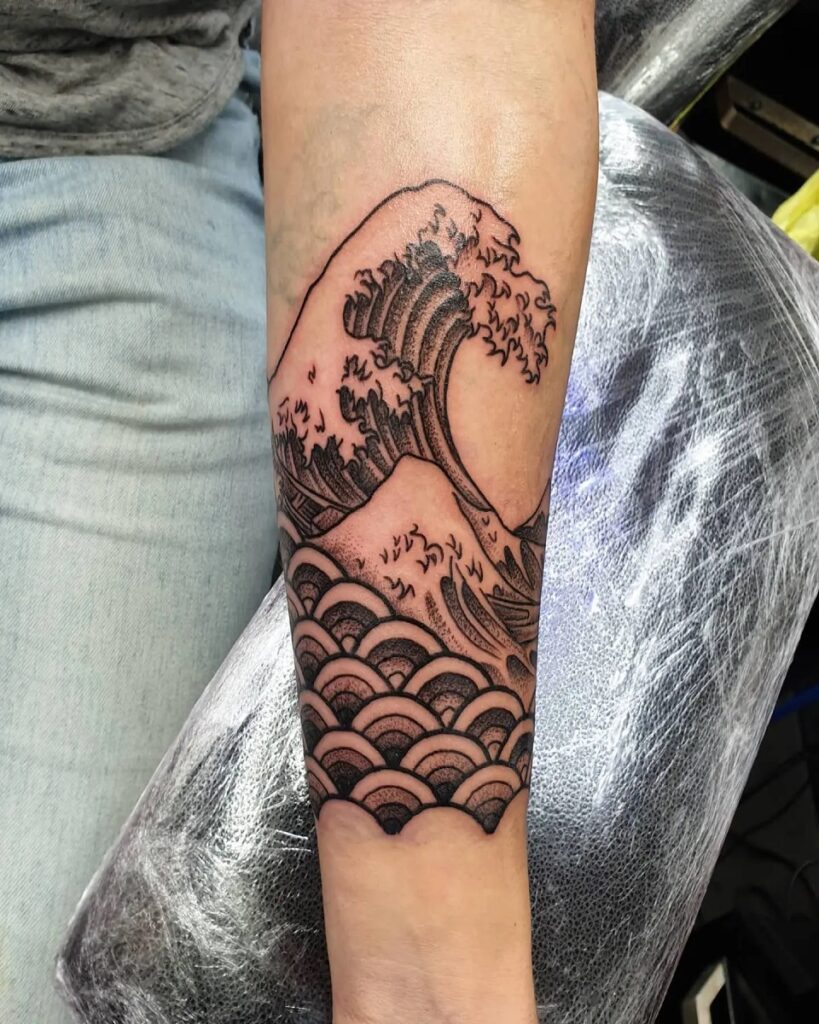
Samurai Tattoos:
Samurai tattoos embody the values of Bushido, the warrior’s code, which emphasizes honor, loyalty, and discipline. The samurai represents the ultimate protector, fiercely devoted to their cause and their people. These tattoos are admired for symbolizing moral strength and bravery.
Each of these designs goes beyond aesthetics—they’re powerful expressions of values deeply rooted in Japanese culture, making them timeless symbols that resonate around the world.
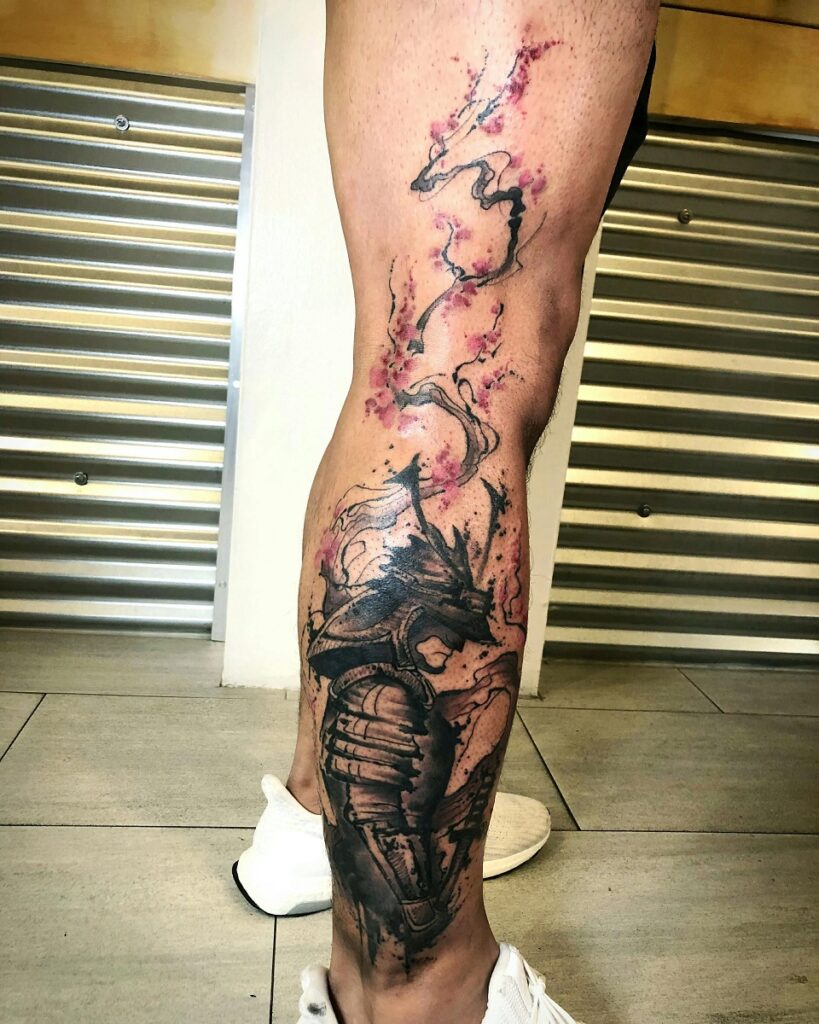
Japanese Kanji Tattoos: Meaning and Importance
A kanji tattoo is a design that incorporates Japanese characters, each representing a word, idea, or concept. These tattoos carry deep personal meaning, often reflecting someone’s values, beliefs, or significant life moments.
However, choosing the right kanji is essential—each character holds cultural weight and can have multiple interpretations, so it’s important to get it right. That’s why many people seek out skilled tattoo artists who understand the nuances of kanji to ensure their tattoo reflects the intended meaning.
Beyond their beauty, kanji tattoos are a way to connect with Japanese culture and tradition. The thoughtful process of selecting the perfect characters makes these tattoos both meaningful and deeply personal.

Tattoo Placement and Sleeve Designs
In Japanese tattoo culture, where a tattoo is placed is just as important as the design itself, especially when it comes to sleeve tattoos. Sleeve tattoos, which cover the entire arm, are often chosen for their ability to tell a full story or reflect a larger theme.
Each part of the design contributes to a narrative, weaving together elements like flowers, animals, and warriors into a meaningful journey. These sleeves often symbolize personal growth, honor, or the challenges and triumphs of life.
Beyond sleeves, other placements like the back or chest carry their own significance. A large back tattoo might represent strength and protection, while a tattoo on the chest is often tied to personal beliefs or love. The placement of a tattoo is a deliberate choice, reflecting the wearer’s life story and honoring the rich tradition of Japanese tattooing.

Final Thought
Japanese tattoos are so much more than stunning designs—they’re powerful symbols of strength, culture, history, and personal identity. Whether it’s the bold imagery of samurai and tigers or the subtle meanings behind kanji characters, each tattoo offers a unique window into the wearer’s journey and values. From the timeless elegance of a dragon tattoo to the deep significance of kanji, Japanese tattoos use the art of ink to tell meaningful stories.
When choosing a Japanese tattoo, it’s important to think carefully about its meaning, colors, and placement. Every element—whether it’s a symbol or a larger theme—connects to centuries of tradition and adds depth to the design. A Japanese tattoo isn’t just a piece of art; it’s a deeply personal expression of your beliefs and cultural connection.
For more about Tattoos, visit Black Door Studio
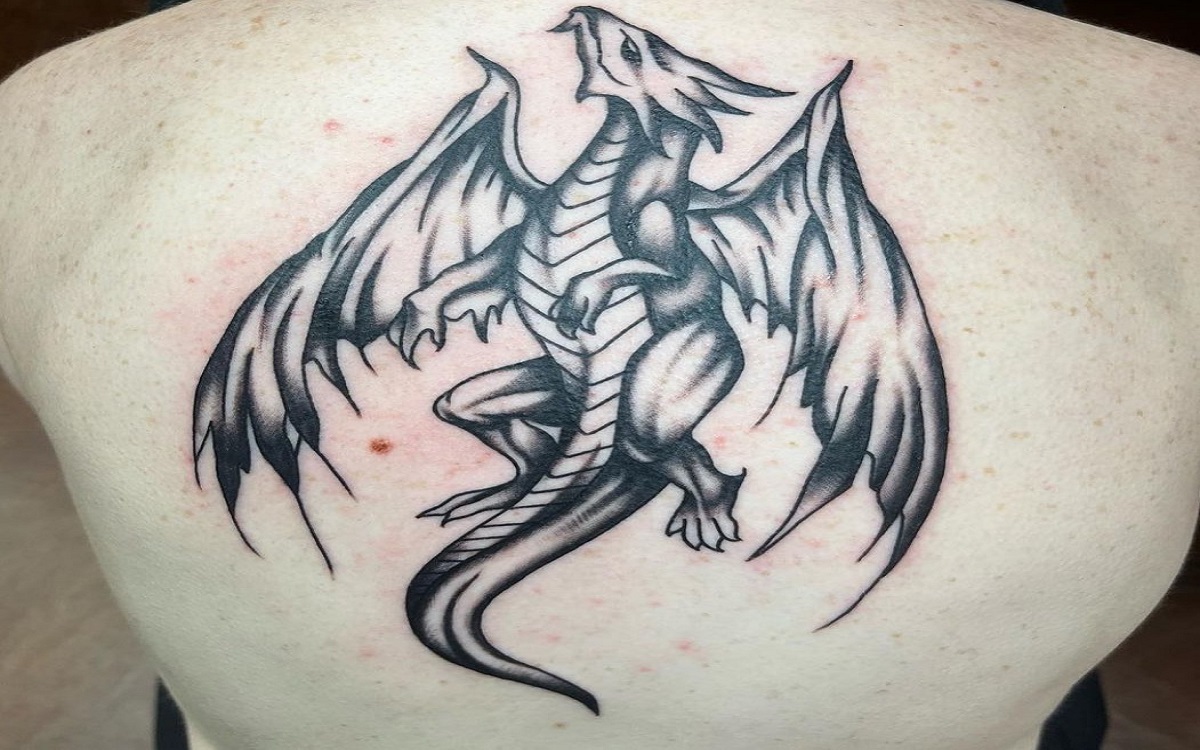
Leave a Reply